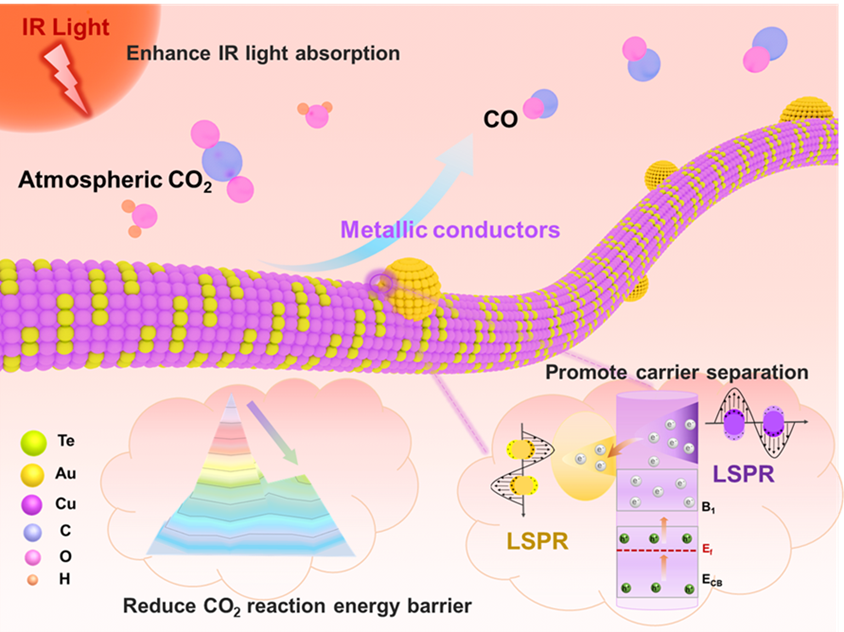《Adv. Mater.》: Infrared Photothermal Catalytic Reduction of Atmospheric CO2 into CO with 100% Selectivity via Dual-plasmon Resonance Conductor
Mengqian Li,+ Zequn Han,+ Jie Kong,+ Qinyuan Hu, Wenxiu Liu, Jiaqi Xu, Wensheng Yan, Jun Hu, Junfa Zhu, Yang Pan, Meng Zhou,* Qingxia Chen* and Xingchen Jiao*
Today, the fabrication of carbon monoxide (CO) in industry customarily necessitates elevated temperature and pressure. Concurrently, the harnessing of infrared (IR) light, which constitutes nearly 50% of solar energy, has predominantly remained unexploited due to a pronounced contradiction between the utilization of IR light and CO2 photoreduction. To break the above limitation, we design a dual-plasmon resonance conductor with metallic nature, which first realize the synthesis of CO with 100% selectivity from infrared photothermal catalytic reduction of atmospheric carbon dioxide (CO2). Taking the Au particles loaded Cu7Te4 nanowires as an example, the surface dual-plasmon resonance coupling effect can optimize the three critical processes of CO2 photoreduction, in which we first illustrated the dual-plasmon resonance effect lowered the thermodynamic reaction energy barrier, facilitating the selective generation of CO products. Consequently, the Au-Cu7Te4 nanowires manifest a CO evolution rate of approximately 2.7 μmol g−1 h−1 with 100% selectivity for atmospheric CO2 reduction driven by IR light, several times higher than that of the Cu7Te4 nanowires.

Figure 1. Schematic illustration the designed environmentally friendly CO synthesis route form infrared-light-driven reduction of atmospheric CO2 over a dual-plasmonic photocatalyst, in which the dual-plasmonic effect helps to improve infrared region absorption and promote carrier space separation, but also reduce CO2 reaction energy barrier.
